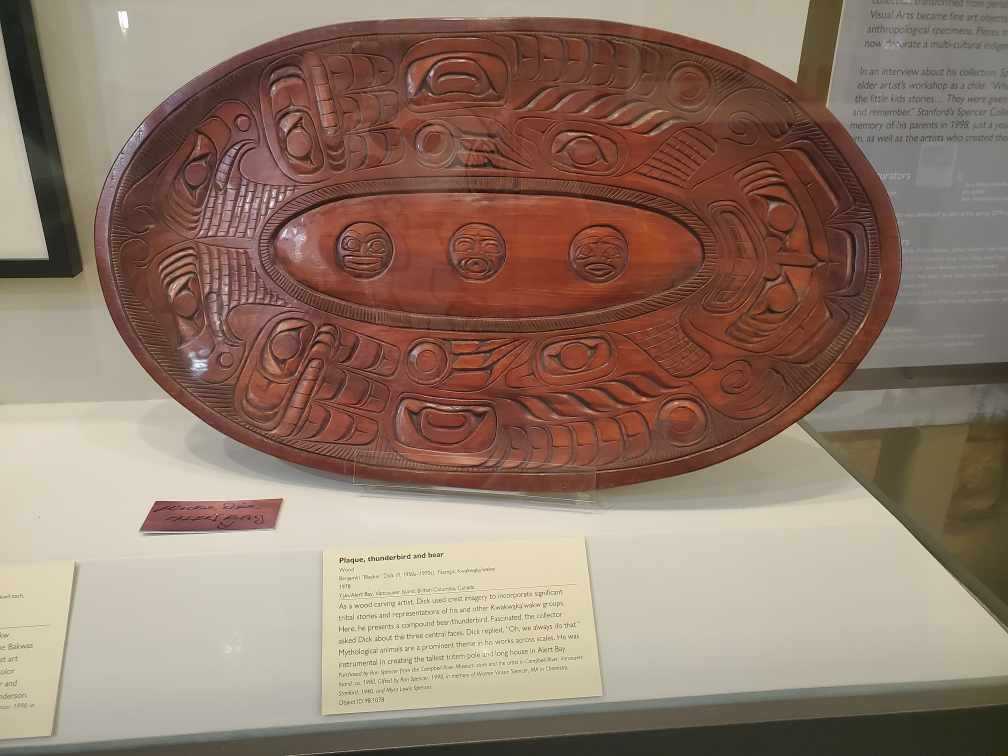At the Stanford Archaeology Center’s “Trading Faces: Aspects of a 20th Century Coast” exhibit, visitors are greeted with a window into the past as they explore a collection of Native American artifacts from Canada and Alaska.
The collection features a variety of works, ranging from ladles and vessels to totem poles. Alongside each piece, the exhibit offers explanations and historical context.
Many of the pieces originated from the Kwakwaka’wakw, an indigenous tribe of the Pacific Northwest Coast. The exhibit explores mythology and materials used in these pieces and explains the cultural significance they have to the tribe. These pieces were created in the middle-to-late 20th century and are filled with tributes to the tribe’s history and culture.
Kwakwaka’wkw artists connected with the environment through use of natural resources in creating art. Wood was a common material, and the carving technique was unique for each artist and piece.
The “Ladle, raven,” created by Stan Hunt in 1986, shows a raven carefully carved into the handle of the ladle. The piece was created using Yellow Cedar wood and paint for its vivid colors. The intricate carvings include symbols such as salmon trout heads, ovoids and form lines. Sam Hunt’s art is known for these unique and detailed carvings.
Fellow artist Tom Henderson used carving techniques to create the “Models of a copper,” which was considered by the Kwakwaka’wakw people to be a great status symbol when it was created in the 1970s. The piece shows a large, carefully engraved face depicting either a bear or a beaver. This engraving is mounted on a structure with a paddle-like shape, and stands out for its variety of colors and detailed features.
Stories from the Northwest Coast Tribes are preserved with each unique piece.
A common symbol in Kwakwaka’wakw folklore is the Bawkas, a supernatural spirit whose goal is to bring people to the world of the dead. According to legend, Bawkas haunts forests to tempt humans into eating ghost foods that will turn them into supernatural spirits.
The “Mask, Bakwas” piece is a traditional artistic description of Bakwas. Similar masks were used in potlatch ceremonies, where dancers would use them to personify the Bakwas and perform myths revolving around their danger and seduction. It is carved with red cedar, a popular material known for its strength.
While the exhibit explains the meanings behind some of its pieces, others are intentionally left mysterious to remind non-Native viewers that as outsiders, they cannot understand all of the cultural context these pieces carry. For example, pieces from the artist Doug Cranmer often contain hidden information about specific locations and subjects.
“Trading Faces” will remain open through May 2020. It is free to visit and open to the public.
Contact Elisa Moraes-Liu at elisacliu ‘at’ gmail.com.
